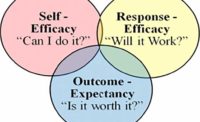
Obviously, when it comes to injury prevention, self-directed behavior is more desirable. In this state individuals choose the safe way when they perform alone. So how do we promote self-persuasion, and move employees from other-directed to self-directed behavior? This article discusses the role of incentives and disincentives in facilitating or inhibiting self-persuasion and self-directed behavior.
(I define self-persuasion as an internal
dialogue or mental script that supports our ongoing behavior and motivates continued participation in the absence of external contingencies. Such behavior is self-directed and self-motivated.)
The reverse-incentive effect
What if someone offered you a large sum of money — an incentive — to do something for safety? You’ll probably perform the desired activity, but the incentive is apt to stifle self-persuasion and a self-directed state. You’ll be less likely to persuade yourself that the behavior is a reflection of your personal values.Numerous experiments have demonstrated the superior influence of small over large incentives. Let’s examine the classic study conducted by Leon Festinger and Merrill Carlsmith in 1959. They paid college students either $20 or $1 to tell another student a boring task they just performed was actually fun.
Which incentive influenced more self-persuasion that the task was not as boring as it seemed? Yes, the lower incentive facilitated more self-persuasion, presumably because the subjects paid $1 had less external motive to call a dull task fun. With only minimal incentive to tell a lie, they convinced themselves the task was really not that boring. In contrast, the $20 group had an excuse for lying and did not need to change their perceptions of the task.
The same kind of self-persuasion occurs when we put a lot of effort into a special assignment without extra compensation. Research in 1959 by Eliot Aronson and Judson Mills found that students who went through a severe initiation to become a member of a “special” discussion group rated the group’s silly and boring discussion as significantly more interesting, compared to students who gained admission to the same group with only a mild initiation.
What’s the message here for using incentives to motivate safe work practices?
Safety incentives must not be presented nor perceived as a “payoff” for behavior. When the only justification people give for their behavior are external consequences, they are not likely to develop an internal rationale for their actions.
Behavior-based rewards for safety should be given as only “tokens of appreciation” for the many actions people take to keep themselves and others injury-free. Preventing injury is the big payoff, and that warrants plenty of internal justification or self-persuasion.
Severe vs. mild threats
Now let’s consider the use of disincentives or threats to motivate behavior. Should a threat be severe or mild?If you want self-persuasion to occur consistent with the desired behavior, you should use the smallest disincentive possible to initiate the behavior you want. Then, through self-persuasion, the behavior has a chance of continuing when the threat no longer exists.
The superiority of small over large disincentives to prevent undesirable behavior was demonstrated in a series of experiments referred to as “the forbidden toy studies.” Children were asked not to play with an attractive toy, and then were given either a mild or severe threat of punishment for disobeying.
In the “mild threat” condition, the experimenter said something like, “It is wrong to play with that toy.” An additional statement was added in the “severe threat” condition: “If you play with that toy, I shall be very angry and will have to do something about it.” Then, the experimenter left the room and stepped behind a one-way mirror to watch what happened.
Very few children played with the forbidden toy, regardless of whether they were mildly or severely threatened. Most chose to play with less attractive toys. That’s a critical point. The mild threat was sufficient to prevent the undesirable behavior.
In a related study published by Jonathan Freedman in 1965, another experimenter returned to the school where 44 boys had participated in a mild or severe threat situation six weeks earlier. The experimenter took the boys out of class individually, and with no reference to the prior study, instructed each boy to take a drawing test. While scoring the test, the experimenter told each boy he could play with any toy in the room. The same five toys from the previous study were available, including the forbidden toy.
Of the boys who had previously received the severe threat, 17 (77 percent) played with the forbidden toy, compared to only seven (32 percent) who had received the mild threat. Presumably, more children given the mild disincentive adopted a self-perception consistent with their avoidance behavior during the earlier session. Through self-persuasion, they developed a rationale for avoiding the previously forbidden toy — even when there was no threat of punishment.
There is a message here for workplace programs designed to motivate compliance with safety regulations. Language such as “compliance” and “regulation” clearly takes control out of the hands of employees. Now add the threat of a fine or losing one’s job. These kinds of consequences will certainly motivate people to follow rules that are enforced, but don’t expect these disincentives to encourage the kind of self-persuasion needed when people work alone.
For long-term desired results in safety, it’s necessary to promote self-persuasion and self-directed behavior — unless you have the resources to keep incentives and disincentives in place for external motivation.

